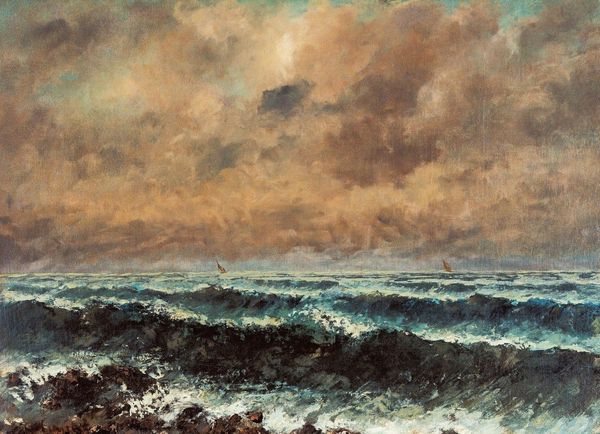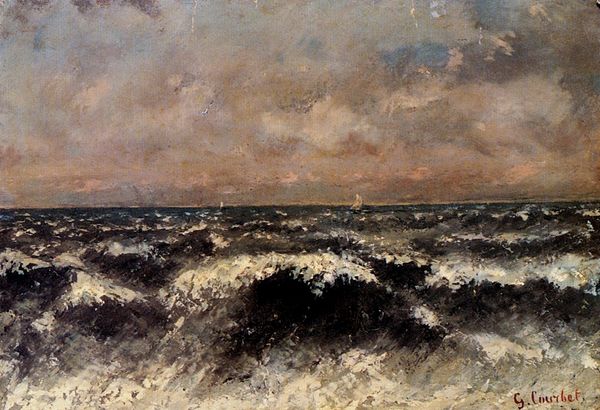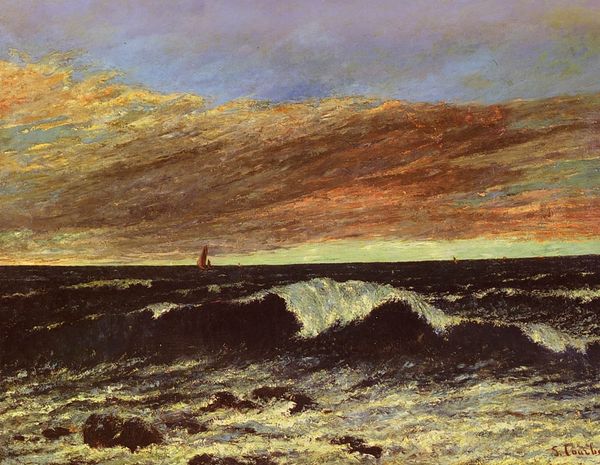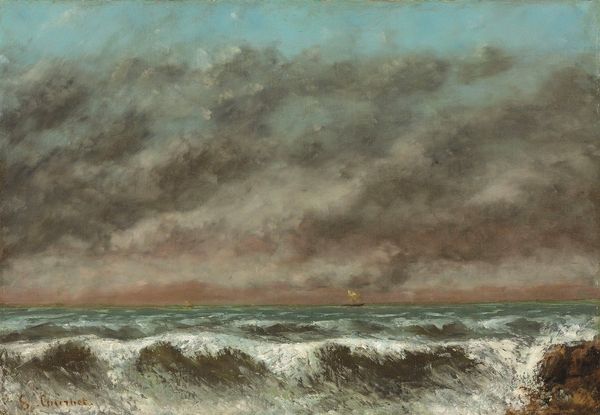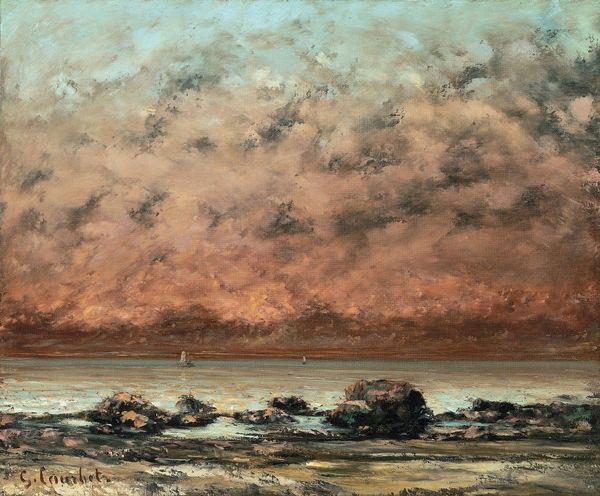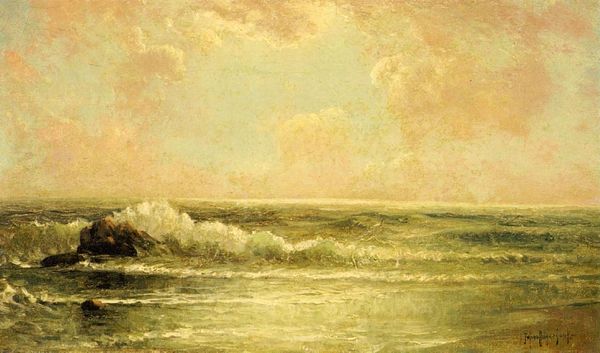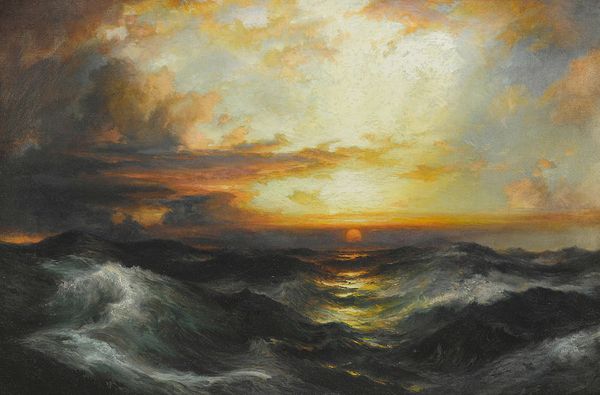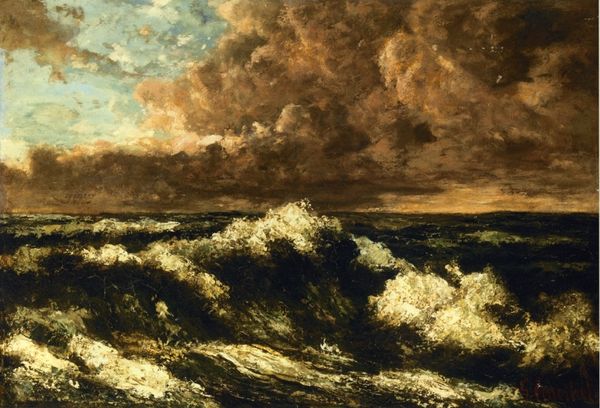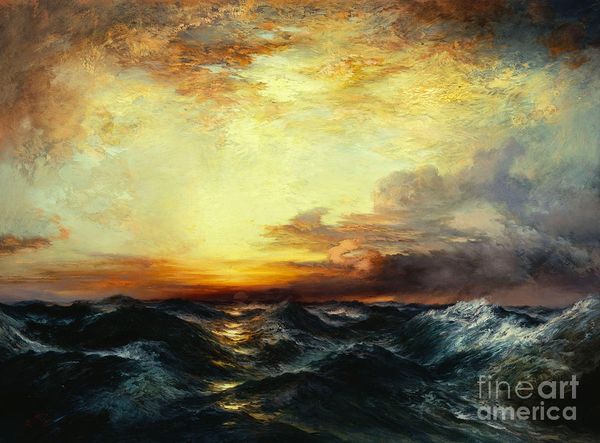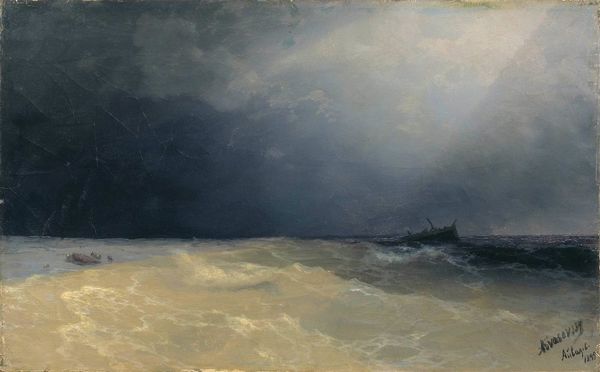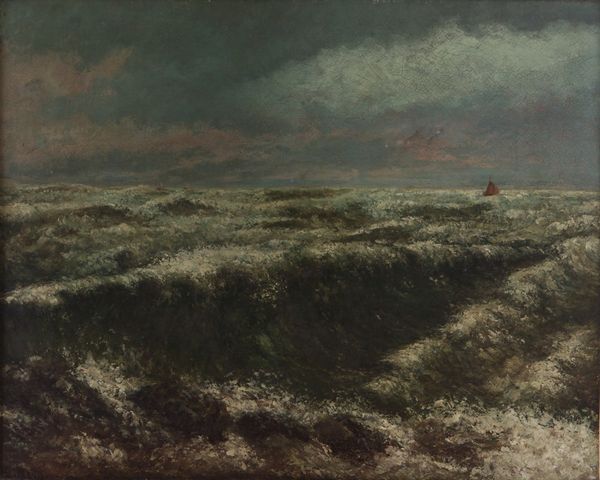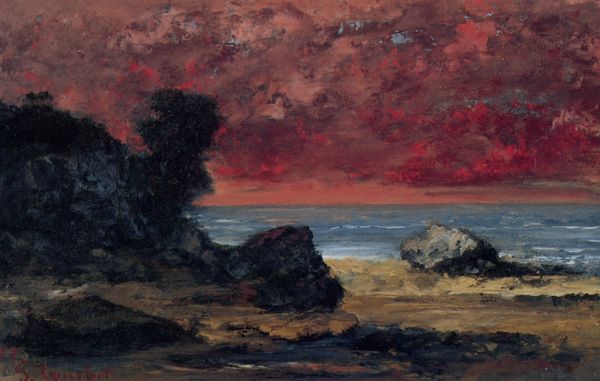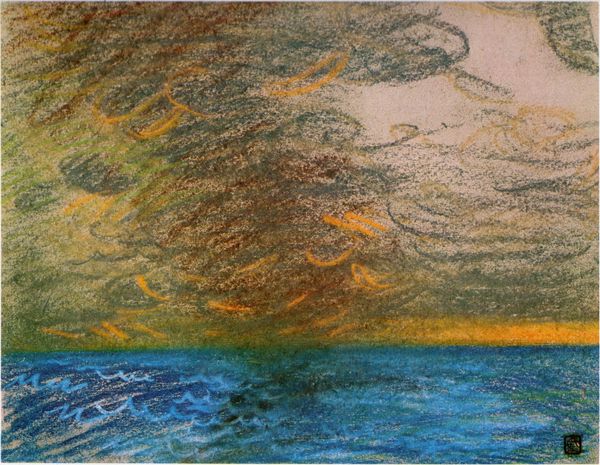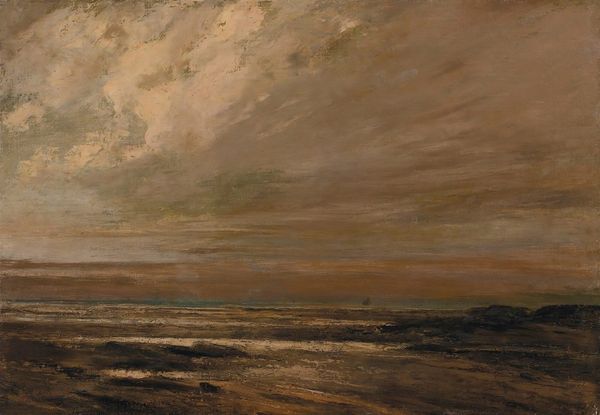
oil-paint
#
sky
#
impressionism
#
oil-paint
#
landscape
#
impressionist landscape
#
ocean
#
cloud
#
water
#
sea
Copyright: Public domain
Editor: Here we have Gustave Courbet's "Seascape" from 1874, created with oil paint. The sky and sea blend into one another so seamlessly! What do you make of a landscape like this? Curator: This piece strikes me as an exercise in the materiality of paint itself. Consider how Courbet applied the pigment. It's less about rendering a perfect illusion of the sea, and more about exploring the substance of oil paint to construct that image. We can clearly see the process in those thick strokes, especially in the turbulent water. Editor: That makes sense. I didn’t really think of it as a record of labour. Are you saying Courbet’s less concerned with… the ‘ocean-ness’ of the ocean? Curator: Precisely! It’s the act of painting, the manipulation of material, and perhaps the artist’s physical exertion in creating the artwork, that’s central. It blurs the distinction between art and craft. The ocean is just the *ostensible* subject of his painting, it's the vehicle he uses to perform these explorations of craft. Editor: So the “Seascape” becomes a study of painting more than the sea itself? What about the impact of impressionism? Curator: Absolutely! "Impressionism" serves as the perfect environment for his work. Where traditional landscapes create the illusion for wealthy buyers, Courbet brings the studio process right onto the canvas. We consider not just *what* is depicted, but *how* it is made and *why* he used the labour and materials in the way he did. Editor: This focus on materials has completely reshaped my view of impressionism. It highlights the art, and also the work. Curator: Yes, looking at the labor and process allows a richer, more nuanced conversation than pure aesthetic judgement.
Comments
No comments
Be the first to comment and join the conversation on the ultimate creative platform.
